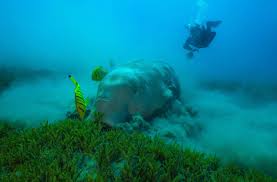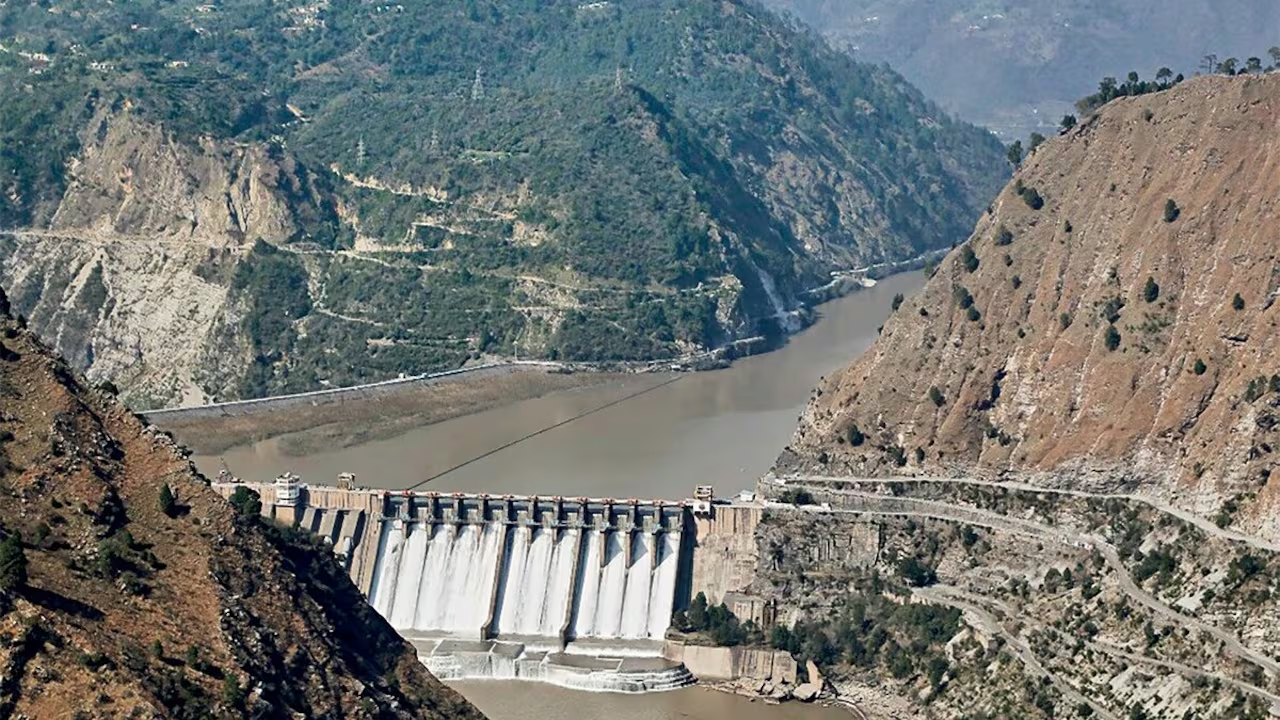- Courses
- GS Full Course 1 Year
- GS Full Course 2 Year
- GS Full Course 3 Year
- GS Full Course Till Selection
- Answer Alpha: Mains 2025 Mentorship
- MEP (Mains Enrichment Programme) Data, Facts
- Essay Target – 150+ Marks
- Online Program
- GS Recorded Course
- Polity
- Geography
- Economy
- Ancient, Medieval and Art & Culture AMAC
- Modern India, Post Independence & World History
- Environment
- Governance
- Science & Technology
- International Relations and Internal Security
- Disaster Management
- Ethics
- NCERT Current Affairs
- Indian Society and Social Issue
- NCERT- Science and Technology
- NCERT - Geography
- NCERT - Ancient History
- NCERT- World History
- NCERT Modern History
- CSAT
- 5 LAYERED ARJUNA Mentorship
- Public Administration Optional
- ABOUT US
- OUR TOPPERS
- TEST SERIES
- FREE STUDY MATERIAL
- VIDEOS
- CONTACT US
First Asian Regional Dialogue on Seagrass and Dugong Conservation
First Asian Regional Dialogue on Seagrass and Dugong Conservation

Introduction
- The First Asian Regional Dialogue on Seagrass and Dugong Conservation, scheduled for February 20–21, 2025, in Bangkok, Thailand, aims to address the declining health of seagrass ecosystems and dugong populations in the Indo-Pacific region.
- This dialogue brings together policymakers, scientists, and conservationists to discuss actionable strategies for preserving these vital marine ecosystems.
- The event will leverage expertise from multiple organizations, including the Dugong Memorandum of Understanding (MOU), UNEP/GEF South China Sea Strategic Action Programme (SCS-SAP), and Seagrass Ecosystem Services Project (IKI SES).
Objectives of the Dialogue
- Facilitate Knowledge Sharing – Strengthen capacity building among stakeholders through research presentations and case studies.
- Showcase Achievements – Present success stories from projects like the Seagrass Ecosystem Service Project.
- Develop Practical Solutions – Formulate actionable strategies to address conservation challenges.
- Strengthen Collaboration – Foster international partnerships for effective coastal ecosystem management.
Seagrass: The Unsung Hero of Marine Ecosystems
Seagrass conservation is a core component of the dialogue’s objectives, as these ecosystems play a crucial role in supporting biodiversity, mitigating climate change, and protecting coastal communities.
What Are Seagrasses?
- Seagrasses are marine flowering plants that form underwater meadows in shallow coastal waters.
- These ecosystems provide food, shelter, and breeding grounds for marine life, including fish, turtles, and dugongs.
- Despite their ecological significance, seagrass remains one of the least protected and studied marine ecosystems.
Importance of Seagrasses
Seagrass meadows play a crucial role in biodiversity conservation, climate regulation, and coastal protection:
- Carbon Sequestration: Seagrasses can store carbon 35 times faster than tropical rainforests and lock it away for thousands of years, making them essential for mitigating climate change.
- Marine Biodiversity: Seagrass meadows serve as nurseries for 750 fish species and provide habitat for 121 threatened marine species, including dugongs and green sea turtles.
- Coastal Protection: Seagrasses act as natural barriers, reducing wave energy and preventing shoreline erosion, thereby protecting coastal communities from extreme weather events.
- Food Security: Over 20% of the world’s fisheries depend on seagrass meadows, supporting the livelihoods of millions of coastal residents.
- Water Quality Improvement: Seagrasses filter, cycle, and store nutrients and pollutants, significantly improving marine water quality.
- Tourism and Fisheries: These ecosystems support marine-based economic sectors, including coastal tourism and fisheries by providing critical nursery habitats.
The Global Decline of Seagrass
A recent study published in Nature Reviews Earth & Environment (February 28, 2025) by Carlos M. Duarte highlights a global decline in seagrass meadows:
- Seagrass has been disappearing at a rate of 1–2% per year over the past century.
- Nearly 5% of all seagrass species are now endangered.
- Protecting 30% of seagrass by 2030 could safeguard marine biodiversity and store millions of tons of carbon.
- Since the 1930s, 7% of seagrass habitat is lost annually.
- Only 26% of globally recorded seagrass meadows fall under Marine Protected Areas (MPAs), compared to 40% of coral reefs and 43% of mangroves (UNEP, 2020).
Seagrass in India:
India’s coastline spans 11,098 km, with extensive seagrass meadows found in:
- Gulf of Mannar
- Palk Bay
- Andaman & Nicobar Islands
- Lakshadweep Islands
- Gulf of Kutch
A 2022 study estimated that India’s seagrass covers 516.59 sq km, capable of absorbing 434.9 tonnes of CO₂ per sq km per year, making it a critical tool for climate action. However, enforcement of conservation laws remains weak, and habitat degradation is accelerating.
Challenges in Seagrass Restoration
- Funding & Long-Term Monitoring – Many projects lack sustained financial backing, making large-scale implementation difficult. Additionally, long-term monitoring and maintenance are essential for restored meadows but remain underfunded and inconsistent.
- Pollution & Water Quality – Runoff from coastal industries, agriculture, and urban areas introduces pollutants that hinder seagrass regrowth, reducing conservation effectiveness.
- Coastal Development, Tourism & Overfishing – Infrastructure expansion, unregulated tourism, and destructive fishing techniques (e.g., bottom trawling) disturb fragile seagrass habitats, accelerating degradation.
- Climate Change Impacts – Rising sea temperatures, ocean acidification, and extreme weather events make restoration difficult and increase habitat vulnerability.
- Lack of Public Awareness & Community Engagement – Many coastal communities do not recognize the ecological benefits of seagrass, leading to unintentional destruction. Educating stakeholders is crucial for conservation success.
Addressing these challenges requires stronger policy enforcement, financial investment, and local community engagement to ensure the long-term success of restoration initiatives.
Seagrass Restoration Efforts
- Virginia, USA: Large-scale restoration efforts have restored 1,700 hectares of Zostera marina, leading to the recovery of associated marine life.
- India: Between 2011 and 2020, researchers restored 14 acres of degraded seagrass areas in the Gulf of Mannar and Palk Bay, achieving an 85–90% success rate.
- Community-Based Conservation: The Organization for Marine Conservation, Awareness, and Research is employing eco-friendly restoration methods, such as bamboo frames and coconut ropes, to transplant seagrass sprigs in Palk Bay.
Dugongs: The Guardians of Seagrass Ecosystems
Importance of Dugongs
- Dugongs (Dugong dugon), also known as “sea cows”, are herbivorous marine mammals that graze on seagrass meadows, ensuring healthy growth and ecosystem balance.
- Their feeding behaviour promotes seagrass regrowth and biodiversity, making them essential for the stability of coastal marine habitats.
- Dugongs also hold cultural and ecological significance in many coastal communities, where they are considered symbols of marine conservation.
- Their presence indicates a healthy marine habitat, crucial for the survival of fish, turtles, and other marine species.
- Dugongs (Dugong dugon) are classified as Vulnerable (VU) on the IUCN Red List. The species faces high risks of extinction in the wild, mainly due to habitat loss, accidental bycatch, and illegal hunting. Conservation efforts are crucial to prevent further population declines.
Threats to Dugongs
Dugongs face numerous challenges that threaten their survival, primarily due to human activities and environmental changes.
- Habitat Loss – Seagrass degradation poses a direct threat to dugong survival. Studies indicate that over 7% of seagrass habitat is lost annually, significantly reducing dugong feeding grounds.
- Hunting & Poaching – Dugongs are hunted for their meat and oil in some regions. Reports suggest that illegal poaching remains a concern in certain coastal areas.
- Bycatch – Accidental entanglement in fishing nets leads to high dugong mortality. A study in India found that over 50% of dugong deaths were linked to bycatch incidents.
- Coastal Development – Infrastructure projects disturb dugong habitats, leading to displacement. Reclamation and tourism projects in the Indo-Pacific have significantly reduced dugong populations.
- Inadequate Law Enforcement & Poverty – Weak regulations and socioeconomic challenges hinder conservation efforts. Despite legal protections in several countries, enforcement remains inconsistent, leading to continued habitat degradation and illegal hunting.
Recent population estimates suggest that dugong numbers have declined sharply across their range. In certain regions, dugong populations have reduced by nearly 50% over the last century. In India, dugong numbers are estimated to be less than 250 individuals, making their conservation an urgent priority.
Dugong Populations in India
India has small dugong populations in:
- Gulf of Mannar & Palk Bay (Tamil Nadu) – Dugong Conservation Reserve established in 2021.
- Gulf of Kutch (Gujarat)
- Andaman & Nicobar Islands – Dugong is the state animal.
Conservation Efforts
- CMS Dugong MOU – International initiative promoting dugong and seagrass conservation.
- India’s Dugong Conservation Programme – Launched to map and protect dugong populations across Tamil Nadu, Gujarat, and Andaman & Nicobar Islands.
- Dugong Conservation Reserve (Tamil Nadu, 2021) – India’s first marine reserve dedicated to dugongs, covering 448 sq km in Palk Bay.
- Community Involvement – Local fishermen trained to monitor dugong movements, reduce bycatch, and support habitat restoration.
Way Forward
- Stronger Legal Frameworks – Governments should integrate seagrass conservation into national marine protection laws, enforce stricter fishing regulations, and include seagrass in climate action policies.
- Expansion of Marine Protected Areas (MPAs) – Only 26% of seagrass habitats are currently protected. Expanding MPAs and enforcing sustainable tourism and fishing can reduce habitat degradation.
- Funding for Research & Restoration – More investment is needed in scientific studies, mapping projects, and large-scale restoration programs.
- Local Community Involvement – Fishermen and coastal communities should be educated on seagrass conservation benefits and included in restoration efforts.
- International Cooperation – Countries should collaborate through initiatives like the Dugong MOU and Seagrass Ecosystem Service Projects to share data, research, and conservation strategies.
Conclusion
- Seagrass conservation is a global necessity. Protecting 30% of seagrass habitats by 2030 will secure marine biodiversity, mitigate climate change, and support millions of livelihoods.
- Strengthening international frameworks like the Dugong MOU and Seagrass Ecosystem Service Projects will ensure the long-term resilience of these ecosystems.
- Seagrass protection must become a national priority, ensuring a sustainable future for marine biodiversity, climate action, and coastal communities.
Dugong Memorandum of Understanding (MOU)
|
|
UNEP/GEF South China Sea Strategic Action Programme (SCS-SAP)
|
|
Seagrass Ecosystem Services Project (IKI SES)
|



